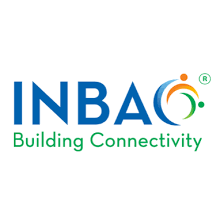


Certifying a building on Digital and Smart Infrastructure involves evaluating and recognizing the building's capability to integrate advanced technologies and systems for improved efficiency, sustainability, security, and occupant comfort. Here are several reasons why certifying a building for its digital and smart infrastructure is beneficial:
1. ENHANCED OPERATIONAL EFFICIENCY
Optimized Resource Management: Smart infrastructure integrates IoT devices,
sensors, and data analytics to optimize the usage of resources like electricity, water,
and heating. This leads to reduced operational costs and minimized waste.
Predictive Maintenance: Advanced monitoring systems can predict equipment
failures before they occur, reducing downtime and maintenance costs by allowing
timely interventions.
2. IMPROVES BUILDING PERFORMANCE
Energy Efficiency: Certification ensures the building incorporates energy-efficient
technologies such as smart lighting, HVAC systems, and automated controls, which
can significantly reduce energy consumption.
Sustainability: Digital infrastructure supports sustainable practices, like real-time
monitoring of carbon footprints and other environmental impacts, which can align
with broader sustainability goals.
3. ENHANCED USER EXPERIENCE AND COMFORT
Personalization: Smart buildings can offer personalized environments based on user
preferences (e.g., lighting, temperature, and air quality), improving occupant
satisfaction and productivity.
Convenience: Integration with mobile applications or voice-activated controls can
make it easier for occupants to interact with the building's features and services.
INCREASED SECURITY AND SAFETY
Advanced Security Systems: Digital infrastructure allows for the integration of
advanced security measures, such as biometric access control, real-time surveillance,
and AI-based threat detection.
Emergency Response: Smart systems can enhance emergency response by providing
real-time data on building occupancy, guiding evacuation routes, and alerting
emergency services.
FUTURE PROOFING THE BUILDING
Scalability and Adaptability: A certified smart building is often more adaptable to
future technological advancements. Its infrastructure can be more easily upgraded to
integrate new technologies, ensuring the building remains relevant over time.
Attractiveness to Tenants and Buyers: Buildings certified for their smart
infrastructure are often more attractive to potential tenants and buyers who value
modern, efficient, and high-tech environments.
COMPLIANCE AND COMPETETIVE ADVANTAGE
Regulatory Compliance: Certification ensures that the building meets specific
standards and regulations related to digital infrastructure and smart technologies.
Market Differentiation: A certification serves as a competitive advantage,
distinguishing the building
DATA-DRIVEN DECISION MAKING
Real-Time Insights: Smart buildings provide real-time data that can be analyzed to
improve building management and decision-making processes. This data can be used
to enhance energy management, improve tenant experiences, and increase operational
efficiencies.
PROMOTES HEALTH AND WELL BEING
Indoor Air Quality Monitoring: Digital systems can continuously monitor air
quality and make adjustments to ventilation and filtration systems to ensure optimal
indoor air quality.
Smart Lighting: Dynamic lighting systems that adjust according to natural light
availability and circadian rhythms can improve occupants' well-being and
productivity.
Certifying a building on digital and smart infrastructure offers multiple benefits, including operational efficiencies, enhanced user experience, increased safety, and future-proofing. These benefits not only contribute to the sustainability and functionality of the building but also provide a significant competitive advantage in the real estate market.